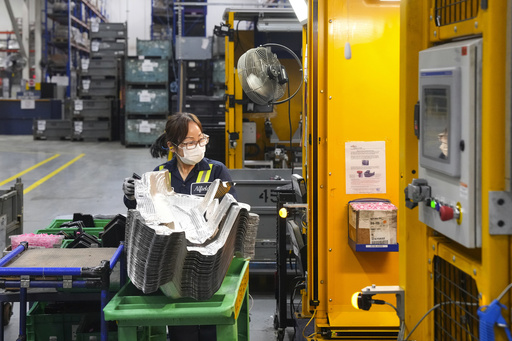DETROIT — The imposition of tariffs by President Donald Trump on steel imports this week has raised alarms among leaders in the automotive sector, who worry about the potential negative effects on American auto manufacturing. While the tariffs are part of the administration’s broader strategy to bolster U.S. industry within a competitive global trade arena, they may inadvertently hurt domestic automakers.
Effective March 12, all steel imports will face a minimum tax of 25%, following two executive orders signed on Monday, which also initiate a 25% tariff on aluminum. This development threatens to disrupt car manufacturers like Ford, General Motors, and Stellantis, leading to higher production costs that are likely to be passed on to consumers purchasing vehicles.
Industry experts suggest that such tariffs increase pressure for domestic sourcing of materials, which could lead to escalating prices in accordance with fundamental supply and demand principles. Sam Fiorani, an analyst with AutoForecast Solutions, explained that if steel production cannot keep pace with demand, a surge in costs could ensue. He noted, “Producing vehicles has many components, and inflating the price of crucial materials will only make already high-priced products even more expensive.”
The average transaction price for a new car in January accounted for $48,641, according to Kelley Blue Book, a considerable expenditure for consumers already feeling the strain of inflation. Fiorani emphasized, “Such tariffs do not have a direct benefit for the automotive sector.”
CEO of Ford, Jim Farley, expressed that Trump’s early policy decisions, which also include delayed tariffs on imports from Mexico and Canada, are proving to be obstacles for the Michigan-based company. Beyond tariffs, Trump’s administration has altered electric vehicle regulations, targeted EV charging infrastructure, and initiated reviews of vehicle emissions and fuel economy standards, casting uncertainty over automakers’ plans for decarbonization. Many automakers have already scaled back their electrification initiatives amid market fluctuations.
Most of the steel and aluminum used in production by the major automakers is sourced from North America, with Ford currently acquiring 90% of its steel domestically. Still, during a recent conference, Farley highlighted the disruption facing companies, stating, “Currently, the landscape is marred with increased costs and confusion.” He elaborated that suppliers often rely on international sources for materials like aluminum and steel, meaning that prices will likely rise due to tariffs, even speculative ones.
When approached for further comments, a Ford representative pointed to Farley’s remarks. Stellantis declined to add anything further. Similarly, GM’s spokesperson mentioned that CEO Mary Barra had suggested during the Wolfe conference that most of GM’s steel and aluminum for vehicles produced in the U.S. is locally sourced, predicting no immediate impacts.
Glenn Stevens Jr., executive director of MichAuto, a Michigan auto industry organization, voiced his concerns regarding potential downstream effects on consumer products, including automobiles. He acknowledged the risk involved, stating, “Historically, the short-term boosts in tariffs favoring domestic production are frequently outweighed by falling downstream opportunities.” He added that the auto sector’s competitive nature makes rapid changes to supply chains and manufacturing locations especially tricky.
Trump previously implemented similar tariffs during his initial term, leading automakers to adjust their financial forecasts for that year, which Fiorani noted. “The automotive sector has structured its financial models to source materials globally when it aligns with efficiency,” he explained.
Erik Gordon, a professor at the University of Michigan’s Ross School of Business, emphasized the difficult balance automakers face: if they do not hike prices, they may diminish profit margins. “The outcome may result in consumers paying more, or manufacturers earning less, in exchange for a more robust U.S. steel industry and reduced reliance on overseas steel suppliers,” he concluded.




